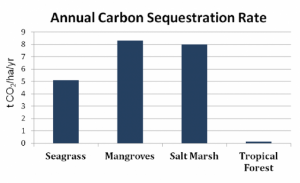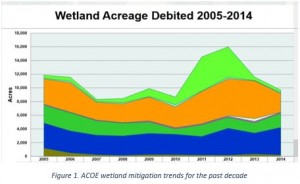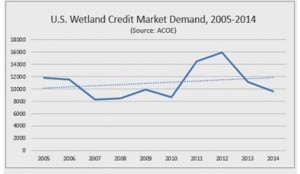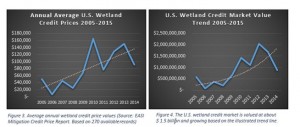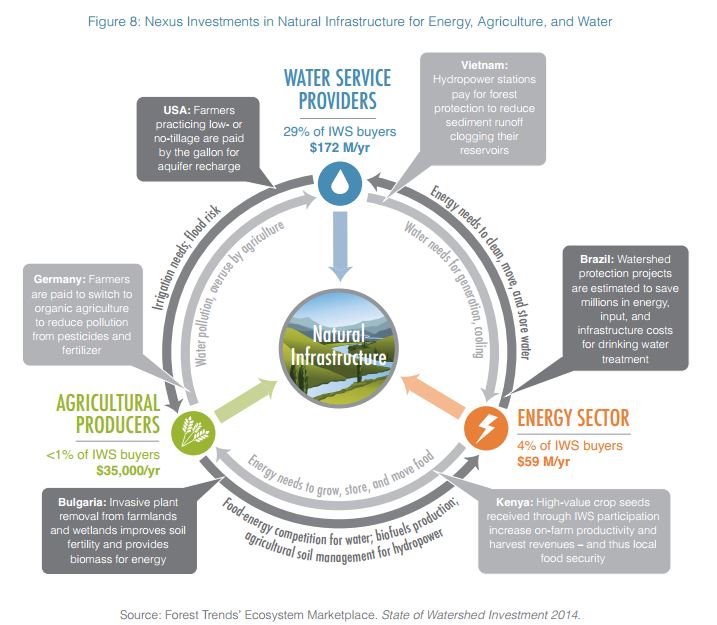12 April 2013 | Christian Schadendorf says he was taken aback when he read “An Audit of Carbon-Neutral Government”, the provincial Auditor General‘s (AG) much-ballyhooed take-down of the Pacific Carbon Trust (PCT), a state-owned enterprise that buys carbon offsets in support of the province’s Carbon Neutral Government program.
Especially surprising was the report’s assessment of the Nature Conservancy of Canada’s (NCC) Darkwoods Forest Carbon Project, a massive conservation effort funded in part by carbon credits that NCC generated by saving trees from “liquidation logging”, a term NCC had created to describe the practice of harvesting all mature timber on a property as quickly as the market can absorb it.
“(W)e found limited support for a ‘liquidation logger’ scenario,” the AG’s report said. “No such companies bid on the property, and it was widely reported at the time of sale that the owner’s preference was to sell to a buyer who would appreciate or maintain the area’s forest and wildlife values.”
The owner was Duke Carl von Wuerttemberg, and Schadendorf was the Duke’s right-hand man in that sale. Contrary to what the report said, Schadendorf had received formal letters of interest from several bidders whose practices would have qualified as liquidation logging, but NCC swooped in with a contract at the asking price before the others could be finalized (a process we will explore in detail later in this series).
“I was surprised to read that assessment in the AG’s report,” he says. “We had calls from several timberland buyers who would qualify as ‘liquidation loggers’, but NCC got there first.”
He wondered why the AG had relied on the news media to characterize the terms of sale even though one of its auditors had interviewed him personally, and he suspected the reference to “widely reported” knowledge meant items like this:
The duke laid down a tough list of conditions for the sale. “No speculators, developers or timber cutters needed to apply,” said Schadendorf. “We wanted someone who could appreciate and maintain the unique beauty of the forest and its wildlife riches.”
Schadendorf doesn’t dispute his own quote, but says the first sentence, which is not part of the quote, overstated things a bit – an error that seemed harmless enough at the time.
“Yes, we preferred a buyer who would maintain the unique beauty of the forest,” he says. “But there was no restriction on who would be eligible to bid or not, and we wanted full fair market value.”
That reality was also “widely reported”, albeit not “at the time of sale” in Canadian Geographic (a publication with a long lead time and the ability to double-check stories without the pressure of a daily deadline):
The Duke sought a buyer who would treat the land with respect, but he also wanted fair market value for a property valued at around $100 million. The usual suspects were interested: forestry companies and land developers that would inevitably strip the timber value, then subdivide the hell out of the place.
Schadendorf says he’d have gladly clarified the point for auditors, too, if they had asked him – but they didn’t. And he’s not the only person with intimate knowledge of the transaction or expertise in the timber business whose evidence was ignored by auditors over the course of their 18-month investigation. In just the two weeks since the report came out, I’ve contacted nearly two dozen easily-identifiable sources – from respected timber economists and carbon practitioners to investors who bid on the property – and only a handful say they heard from the auditors, while so far none who’ve commented say they were taken seriously.
Rather than seek out new information, the auditors seem to have fixated on anything that supported their “findings” – be it a stray paraphrase, a sentence in a newsletter, an outlier transaction, or a very narrow definition of a word with wider meaning – and ignored the vast body of evidence in front of them.
Take, for example, their assertion that NCC didn’t consider carbon finance until after purchasing the property.
“For the NCC, offsets were not a critical factor in the decision to acquire the Darkwoods property,” they wrote. “A carbon offsets feasibility study was not completed until January 2009. The NCC did not approach the Pacific Carbon Trust about offsets until late 2009.”
The last two sentences are correct, but they don’t in any way support the first – as lead auditor Morris Sydor himself conceded during our interviews – because the question isn’t when NCC conducted their formal study or approached the potential buyer, but whether they factored carbon offsetting into their finance plan before buying the property.
“The technical requirement is that you’re looking at legal documents, board minutes, etc,” said Sydor. “If you go back to that period when they purchased the property, there’s nothing publicly available that (indicates) they were going to need offsets to go ahead with this.”
Well, yes, there was nothing “publicly available”, but there was plenty of evidence that NCC was “going to need offsets to go ahead with this.” In fact, NCC’s Director of Land Securement, Tom Swann, sent me two internal memos and one external letter that clearly showed the Conservancy was not only considering carbon credits but actively looking for partners to buy them, and this was more than a year before the purchase (see “The Additionality Paper Trail”, below). I then asked Sydor – a cordial man with an almost encyclopedic knowledge of the facts related to Darkwoods – if he had reviewed these documents.
“They had referred to these documents during our meeting,” he said, “but I was not provided copies.”
Did NCC withhold them? No. The auditors simply didn’t ask.
Then there’s the issue of “regulatory surplus”, which basically says you can’t earn carbon credits just for doing something that the law already requires. The auditors point out – rightly – that NCC used an “Ecological Gift” as part of its financing mix to purchase the property. Once NCC accepted that gift, they were obligated to preserve the land. The report alludes to the gift several times, implying that the gift means that the property was already protected when NCC bought it, when in fact the property became protected because NCC purchased it.
“We also found that the NCC’s potential harvesting activities are significantly constrained by a legal obligation to conserve the land, thereby limiting the baseline options available to the NCC,” the report states – a clear implication that the gift meant the property failed the regulatory surplus test. But when I asked Sydor why he said the report didn’t meet the regulatory surplus test, he silenced me by saying, “We don’t have anything like that in our report.”
I went back and read it again, and he was right – nowhere does the report explicitly say that Darkwoods fails the regulatory surplus test, but it certainly implies it. Page 24 has a sidebar explaining the Ecological Gifts Program, and a sentence – in bold letters – stating, “The Nature Conservancy of Canada had a legal obligation to conserve the property.” They even created an elaborate and misleading timeline that showed when when NCC carried out the property appraisal for the Ecological Gifts Program (August 2007) but makes no reference to earlier efforts to secure carbon finance.
It goes on and on about the program and the obligations that NCC assumes for using the gift to fund its purchase, but nowhere does it explicitly state that there was a pre-existing law – just as nowhere does it really explain the gift’s role in the financing package.
Who Are the Sources?
Then there is the question of sourcing. The document cites only one academic source – an agricultural economist named G Cornelis van Kooten, whose self-described mission includes supporting an effort “to refute the results of computer models that attribute anthropogenic emissions of CO2 to be the leading factor in causing catastrophic global warming.” He’d written a paper critical of the Darkwoods deal – albeit one that was neither published nor peer-reviewed – so it certainly makes sense to contact him. But to make him (or anyone for that matter) the only cited source in the whole paper?
A project like this normally brings in paid consultants who are eager to get their names on the final product, but this one is radioactive. None of the paid consultants seem to want their names on it, and the only two I know by name say they quit. The most recent is Canadian engineering consultancy Stantec, which was retained last April.
“We were not provided with the opportunity to, and we did not, review or provide any comments on the draft or final OAG Report and as such, resigned from our role as an expert advisor,” said Daniel Hegg, the Discipline Lead for Stantec Climate Services, in an e-mail.
That sounds a lot like Stewart Elgie, the associate director of the University of Ottawa’s Institute of the Environment who also resigned after being frozen out of the process.
“I will simply say that I have not been shown or reviewed any of the BCAG’s draft reports for the past 7 months,” he wrote on March 23, 2013, in a letter to PCT. “Before that time, the materials I did review indicated that the audit findings were heading in a direction that was inconsistent with the expert advice I provided in several major areas, particularly concerning the Darkwoods project.”
I urge anyone who did advise them to contact me.
The Baseline Brouhaha (Again)
Then there’s the auditor’s critique of the project baseline, which is the foundation on which all carbon projects are constructed. It represents the consensus agreement on what would probably have happened to the property if NCC hadn’t stepped in to purchase it – a question that we can only answer by looking at other potential bidders and their expected rate of return (See BC And The Baseline Brouhaha: Dissecting The Darkwoods Documents for a more detailed introduction). Sydor and NCC offered widely differing views on this, but NCC backed their views up with reams of data and scores of experts. Sydor offered nothing.
In my interviews with timberland consultants – both those referred by NCC and those I found randomly on the internet – it quickly became apparent that Sydor was basing his analysis on a different expected rate of return than the one that timber analysts I kept running into were using. This matters, as we’ll see in our next installment, because it shows what a commercial buyer would do with the land. Sydor insisted that his data came from several unnamed experts – but he refused to connect me with any of them.
Keep in mind, these are experts who earn a living providing their professional opinions, and not whistleblowers with inside information of wrong-doing. To have one or two off-the-record sources is understandable, but to have none on the record – especially for a report like this – is unheard of.
Finally, after much prodding, Sydor offered an article from 2007 entitled “Rates of Return for Investments in Timberlands – How Low Can You Go?”. It had been written by a team of analysts at Cortex Consultants, but wasn’t an overview of market behavior. Instead, it was a warning to customers that tough times may lay ahead. Indeed, while it asked the question of how low rates could go, it never really answered it. When I e-mailed Cortex, the authors of that report seemed horrified to learn that this letter might have been used to support a major audit.
“This little paper was definitely not meant as an (even pseudo-) academic paper on the issue,” said one, speaking on condition of anonymity.
Of course, Sydor never actually says he used the paper as one of his sources.
“I’ve provided one of the articles that passed our way during the audit,” he said in the e-mail accompanying the link. “It shows that timber returns were high in the 1990s but had dropped so much that returns of 5% to 6% were not unrealistic at the time of the Darkwoods sale.” (We will explore this in more detail later in the series.)
It just passed his way? What does that mean? Did he dig any further? Did he contact the authors? Who knows? And why didn’t he talk to other people who showed an interest in the property?
Schadendorf won’t name the bidders, but I have found two through other channels. One is Jack Julseth of Three Point Properties Ltd. He says he sent a formal letter of interest to Schadendorf, only to learn that NCC had the property “under contract”.
“My group was definitely interested in pursuing the opportunity and at the time had the capacity to do so,” he wrote in an e-mail to NCC. “If my group had been the successful bidder and followed through with a purchase, our intentions at the time were to create a managed forest, to initiate an appropriate and sustainable logging operation, and to subdivide and develop the land – as appropriate – to realize its highest and best use.”
When I asked him what that highest and best use might be, he said that he would have been looking to develop cottages and vacation homes – a scenario that NCC dismissed as being too aggressive to even consider.
To be fair, Julseth also said that NCC entered its bid before he could perform due diligence on the property, so he can’t say for sure what sort of development he’d have done; and Alec Orr-Ewing, who provided the initial timber evaluation that von Württemberg used to set his asking price, says the real-estate potential was quite limited.
“If you look at a contour map of the area, and also at its minimal water frontage, the chances of real estate are minimal, from my point of view,” he wrote in an e-mail. “The lake frontage is west-facing, behind a steep mountain ridge, also there is no legal access to all of the properties.”
Schadendorf says there is legal access, but by boat. Either way, my point isn’t that this was a done deal, but it was a legitimate inquiry, and it’s one of two that I have independently verified. When I asked Sydor if he knew of Julseth’s inquiry, he simply pointed out that “real estate companies are not eligible for this type of project.”
“When you look at the protocol, it says the only scenarios that should be considered are ones where forests remain forest,” he said – meaning that if von Württemberg had sold to a real estate developer, then the Verified Carbon Standard would not have recognized it as a carbon project, which doesn’ really have anything to do with whether there were competing bids or not.
“Now, in the real world, I guess the question is: Did the vendor actually consider Three Point Properties’ bid?” Sydor added.
That is, indeed, the question, and Schadendorf says he did consider it, but NCC moved too fast. He also says Three Points Properties weren’t the only ones who approached him, but they were the only ones he would acknowledge by name, and that because Julseth had already come forward.
“We had calls from several timberland buyers who were known for liquidation logging,” he says. “And we had some industrial timberland buyers look at the property – companies that are in the business of managing timberland sustainably – but they basically concluded that they would have to liquidate it in order to meet their investment objectives because they have investors to answer to.”
So, does this mean that the baseline the auditors advocated – one based on very low harvests in the near-term – wouldn’t have been economically viable?
“They said, ‘If we manage this sustainably, our expected rate of return will not be met, so this property doesn’t work for us,’” Schadendorf answered.
So, if these other bids existed, why didn’t Schadendorf tell the auditors about them?
“They never asked those types of questions,” he says.
The Additionality Paper Trail
There seem to be plenty of questions they didn’t ask, as I learned when I asked NCC’s Tom Swann if there was a paper trail to demonstrate additionality. Without hesitation, he provided three documents that showed what Sydor said couldn’t be shown. One of them was a letter to Patty Richards, Shell Canada’s Manager, Community Investment. It was dated March 5, 2007 (See “Shell Letter”, right) and makes it clear that carbon offsets were, indeed, a very critical factor in NCC’s decision to acquire the Darkwoods property, despite the auditor’s contention to the contrary. Here is an excerpt:
NCC has entered into a conditional purchase agreement to buy the company that owns the property and we are now actively seeking the resources to complete the sale and ensure that future management of the forest contributes to the survival of the mountain caribou and other species.
It is our understanding that Shell Canada and Shell International are involved in projects at various places around the world to realize goals that combine biodiversity conservation and carbon sequestration. We would be very interested in exploring the possibility of Shell Canada or Shell International working with NCC to achieve these goals at Darkwoods.
As you know, standards for calculating carbon increase and resultant CO2 equivalent sequestration are evolving, but I enclose for your information a draft calculation that projects 114,504 volume tonnes of CO2 equivalent sequestered annually in the standing timber alone at the Darkwoods property, which is largely treed with conifers.
Another of those documents was an internal memo (See “Carbon Calculation”, right) from Bill Freedman, a professor of biology at Dalhousie University in Halifax, Nova Scotia, and the Chair of NCC’s National Board of Directors. This is dated March 2, 2007, and it offers a calculation of the carbon potential that NCC had been using to make the deal happen.
And a third (See “Issues Analysis”, right) offers an updated analysis of carbon markets in general.
Also, in a notarized affidavit dated February 5, 2013, NCC CEO John Lounds said that “NCC considered the potential value of carbon credits on the Darkwoods property from as early as September 2006, when carbon sequestration was discussed by NCC fundraising contractors as a potential source of stewardship revenue at Darkwoods.” He says formal inquiries began in December, and that his staff met with Corinne Boone, Managing Director of carbon project developer CO2e, to explore its options.
Finally, there’s a paper co-authored by Freedman (See “Carbon Credits and Biodiversity”, right) and submitted to the Environmental Review on August 27, 2008 – shortly after the property was purchased. The paper clearly shows his thinking on how carbon credits could be used to save biodiversity-rich forests like Darkwoods, and it was just a Google search away.

